Sweet Corn vs Field Corn
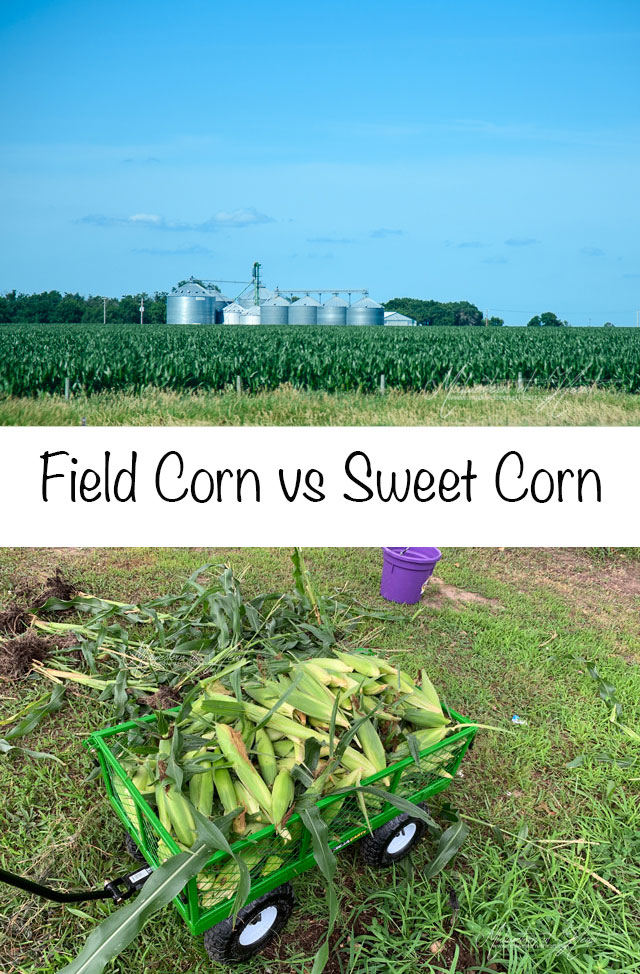
Isn’t all corn the same? Well, no. Sweet corn is the type of corn that you grow in your personal garden or you buy at the store, Farmer’s Market, etc. Field Corn is what you’ll see in fields as you drive through Nebraska (or Missouri, Iowa, Illinois, Indiana, Kansas, etc). You’ll see the Farmer’s out in the field planting with a big planter and harvesting with a combine. The other big difference is when it is peak harvest time.
Similarities and Differences
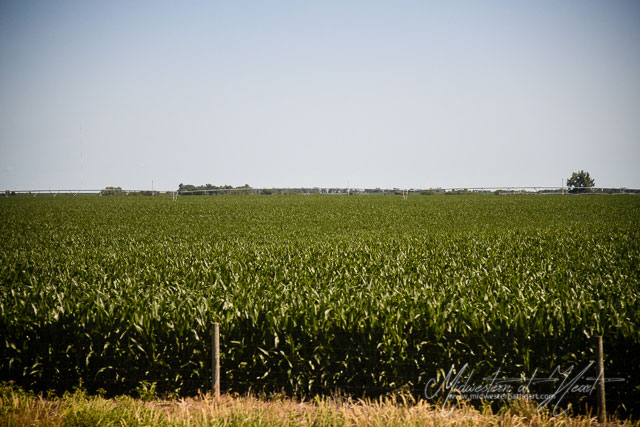
While Sweet Corn and Field Corn are closely related, they are two quite different varieties of corn. One of the biggest differences would be taste. Typically you wouldn’t grab field corn and eat it. Now, I’ve heard on multiple occasions that field corn makes some of the best ears of corn for roasting, it’s definitely not as sweet as sweet Corn which is the corn most people are accustom to eating. So I guess to each their own.
Field corn is also harvested quite different from sweet corn. And a noticeable difference is field corn plants will be a lot taller than sweet corn. Sweet corn will have a more “spindly” stem whereas the field corn has a sturdier stalk. In a drier year, the stalks will be a little more “spindly” in both types of corn.
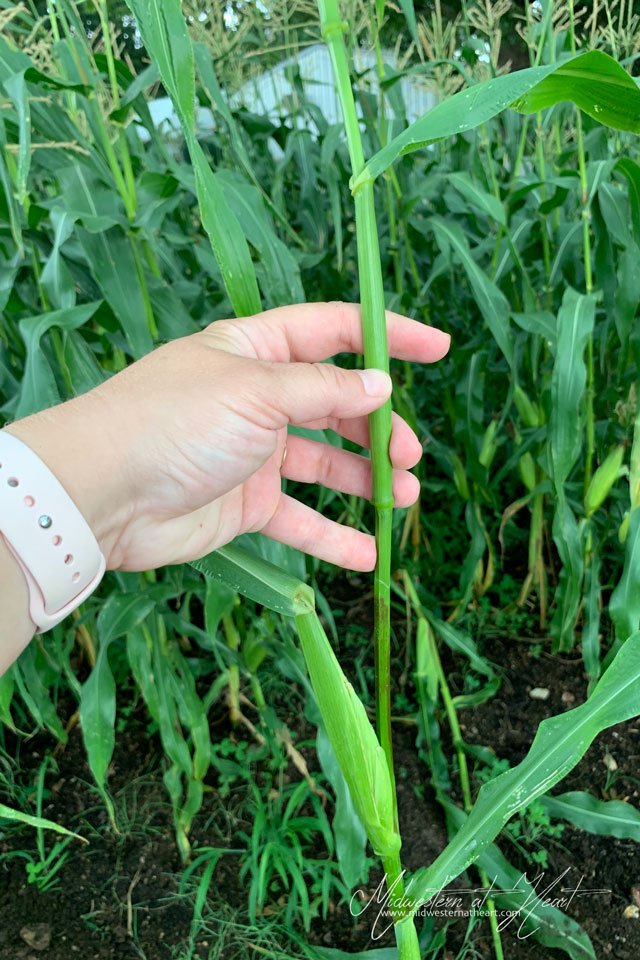
Sweet Corn
How to tell when sweet corn is ready to harvest… Look at the plant. The silks of the ear of corn will be brown.

If you’re willing, grab an ear and peel back the husks. The kernels inside are as developed as they’ll get. They should be yellow/white, round, plump, and uniform. You should immediately want to bite in. The leaves that wrap the ear are a nice bright green color (although you might have a little brown around the edges). The ears themself are still very close to the stem of the corn stalk and still facing upward.
The easiest way to pick the corn is to get a firm hold on the ear, with a swift downward motion, twist the ear of corn and it comes off the corn stalk.
There are multiple ways to shuck the green leaves off the ears of corn.
- Hold the corn ear with the silks toward the top. Peel the leaves downward. Once they gather at the bottom, break off the bottom stalk which removes the leaves. Then go through and remove the silks that are still around the corn.
- Use a knife and cut off both ends of the corn. Then proceed on with the removal of the leaves/silks.
If you are growing your own corn, don’t be weirded out by the worms. They don’t hurt you. Just remove them and move on. haha.
Corn is sold fresh off the cob, or it is “processed” and frozen or canned. Don’t let that word “processed” scare you away. You are the one doing the processing :). That is unless you buy it from the store…
Field Corn
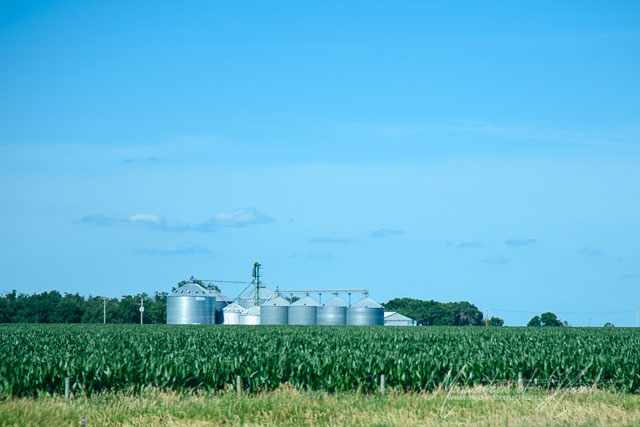
Field corn has a different purpose than sweet corn. It is either grown to make cattle feed, ethanol, or else processed into cornmeal or corn flour used for cooking/baking. Yet other field corn is held back and used as seed corn. Its life cycle isn’t finished and it will be used again the next year to start the corn crop all over again.
Everyday items that you may have in your house and use on a regular basis include field corn such as tortilla chips, corn flakes, corn-based flours, corn-based cereal, etc.
Have you noticed that farmer’s plant field corn earlier than a home gardener, yet they harvest it later? It seems like field corn sits out in the field long after its expiration date. The stalks get brown and dry as do the ears of corn. But that isn’t a bad thing. Corn is very high moisture. The process of leaving field corn in the field so long is it allows it to start the drying out process.
Farmer’s are looking for a couple of things to tell when corn is ready to harvest:
- The silks are a dark brown color
- The shucks around the ears turn brown
- The rest of the plant dies and turns brown
- The ears point down as they fall instead of being held against the stalk.
As the corn dries out, you start to see a “dent” in the corn. This is one sign that the corn is drying out and how it gets the name “dent corn.” Corn is usually ready to harvest between late September and early November depending on when they were able to get it in the ground.
Corn Silks
So we talk about the “silks.” What are they? Well, it is that tassel you see at the top of an ear of corn. Each silk you see is attached to one kernel of corn. Pollen from the tassel on top of the corn stalk (or carried by wind or pollinator such as bees) falls down onto the silk of the corn silk. This is how each individual kernel of corn is pollinated. Then that silk falls off the kernel of corn but stays inside the husk. When you find misshapen or missing rows of corn kernels, there was a problem with pollination that year.

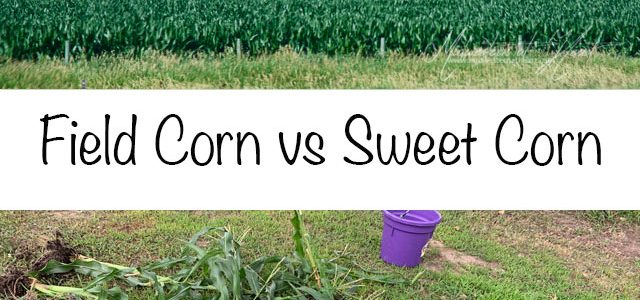



We had sweet corn from Tracy, CA at dinner tonight. NO WHERE NEAR AS GOOD as Iowa or Missouri corn! 🌽
How is popcorn compared to field or sweet corn?
That’s a good question. I’ll need to look into that.